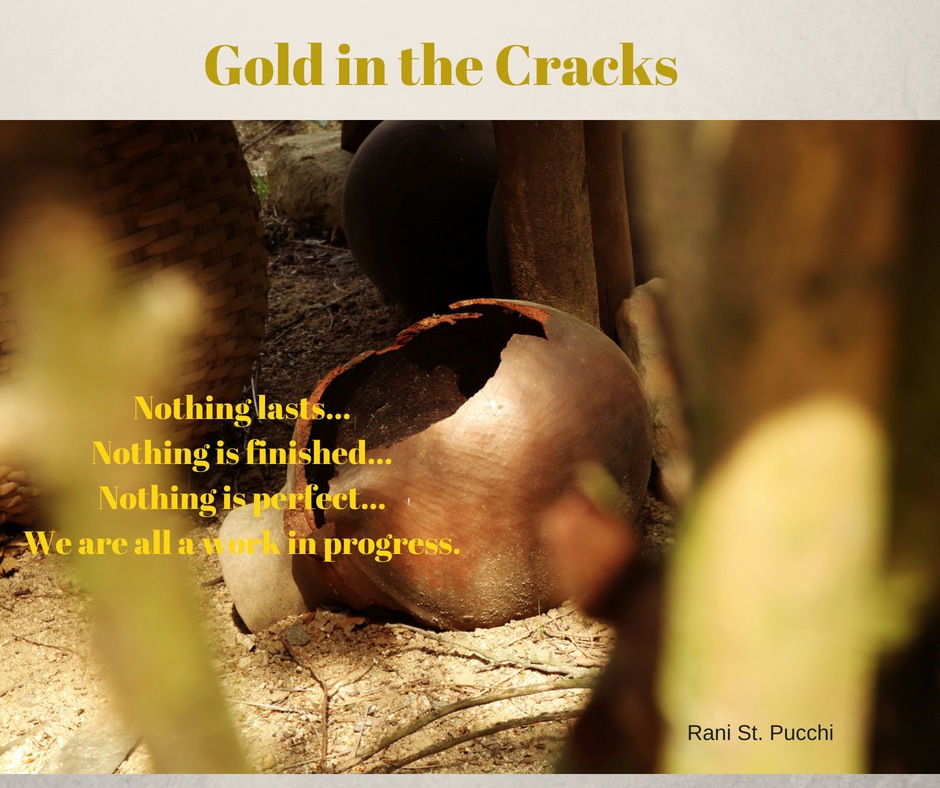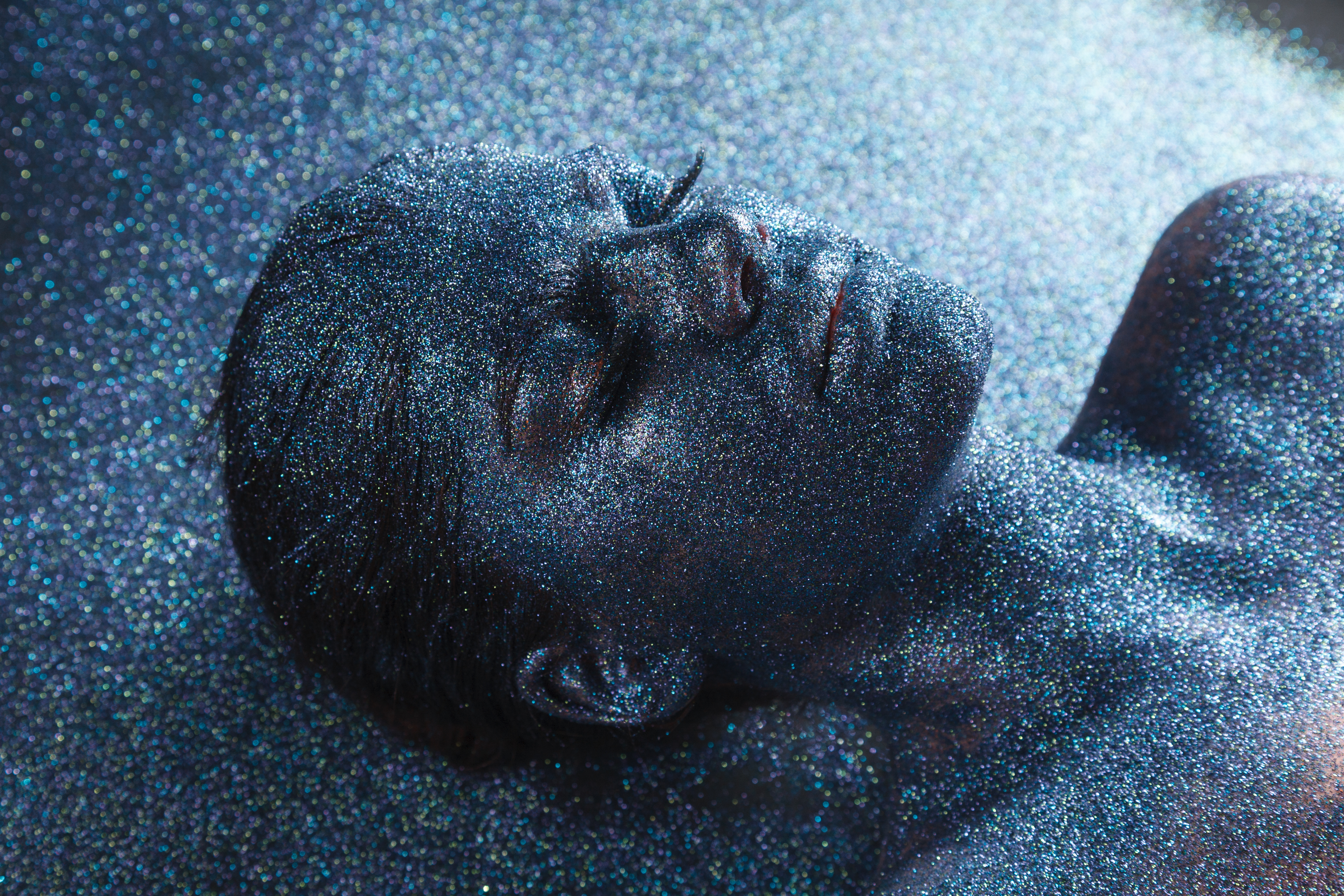“It was the summer of 1989, and I was showing my St. Pucchi bridal collection at the World Fashion Fair in Osaka, Japan. At dinner one evening, a Japanese client handed me a beautifully wrapped gift. That gift remained in its original wrapping cloth, called furoshiki, forgotten for more than two decades all through my move from Dallas to Los Angeles in 1999 until February 2017, when I finally unpacked the last remaining boxes.
They say the teacher appears when the student is ready, not a minute sooner and not a second later. Apparently, this was the right time as my attention was now drawn to the beautiful gift. I gently peeled off the furoshiki and opened the carved, wooden box that revealed a gorgeous jade bowl with golden veins running through it.
My first thought was what a beautiful piece of art. On second glance, I thought the gold veins did not make much sense as they were haphazard and to the naked eye looked like a river flowing through cracks. How interesting, I thought. I picked up the note that was tucked inside the bowl; it read, “May you become a kintsugi master,” and it went on to explain the meaning of kintsugi as “golden rejoining”…
How fascinating! This evoked intriguing thoughts because beholding the artistry of kintsugi, I could immediately see its transformative power. The bowl in my hand was more beautiful for having been broken. While the original form was forever destroyed, the essence of its beauty not only survived, it had been enhanced.
And I thought, if such astounding beauty can emerge from shards of a shattered bowl that was once pristine, could a similar transformation also be possible with the parts of us we believe are shattered beyond repair to create a stunning masterpiece? In other words, can putting the pieces of one’s broken life back together help transform and lead to a total reinvention of the self in which the shattered pieces are alchemized into a beautiful, thriving masterpiece?
Kintsugi gives new life, healing, and rebirth to damaged or aging ceramic objects by celebrating their flaws and history. I learned that the repair is done with lacquer dusted with powdered gold, silver, or platinum. The cracks are filled in with gold.
As a philosophy, kintsugi treats breakage as part of the history of an object and focuses on its hidden beauty with the understanding that rather than something to disguise, the piece is more beautiful because it has been broken. The Japanese believe that when something has suffered damage and has a history, it becomes more valuable.
Similarly, we are all trying to heal emotional wounds and rebuild our lives so we can become stronger. Kintsugi teaches us that nothing lasts, nothing is finished, and nothing is perfect. We are all works in progress, and each scattered piece of our lives is precious and worth embracing.

Living a kintsugi life is to be unafraid of taking risks and getting damaged. Shutting ourselves off from the world to protect ourselves so we can live without suffering is the kiss of death, because then we are resigned to surviving instead of living intensely. The key is to embrace all our broken pieces and create something beautiful and whole.
It’s unrealistic to expect life will always be wonderful. Inevitably, despite taking the utmost care, fragile things such as a favorite bowl will occasionally break. Suffering— whether it be through illness, job loss, heartbreak, tragedy, or the loss of a loved one—is part of life, and adversity a collateral element of living. Ceramics are fragile, strong, and beautiful all at once, just like people. Ceramics and life can break apart into a thousand pieces, but that’s not reason enough for us to stop living passionately. Painful experiences can in fact make us into more determined individuals ready to face the world with optimism.
As you go through life, be prepared for the inevitable, and when challenging times occur, apply the philosophy of kintsugi. Instead of sweeping problems under the metaphorical rug, put yourself back together and embrace the challenges you face as being part of life’s journey and acknowledge that it’s your scars that make you a strong and interesting person. Your imperfections are your story; they show how far you’ve come.”
*Above is an excerpt from the soon to be released book, “Gold in the Cracks: Move from Shattered to Whole and Reveal Your Light”
© Rani St. Pucchi, 2018
Rani St. Pucchi is an award-winning Couture Fashion Designer, Style & Image Consultant, and a Relationship Expert. She is a Bestselling Author, an Inspirational Speaker, and a Success Coach and Trainer. Her TEDx talk: Is Your Body Image Holding You Back has received worldwide acclaim. Rani’s#1 International Bestselling Books, Your Body, Your Style: Simple Tips on Dressing to Flatter Your Body Type ; The SoulMate Checklist: Keys to Finding Your Perfect Partner; and Your Bridal Style: Everything You Need to Know to Design the Wedding of Your Dreams are available on Amazon and at Barnes & Nobles. Her fourth book, Gold in the Cracks: Move from Shattered to Whole and Reveal Your Light, will be released globally on October 17th, 2018.
For more information on Rani please visit www.ranistpucchi.com


